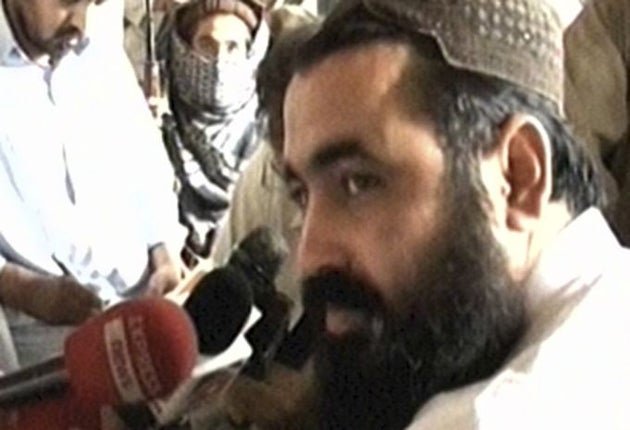Pakistan's Taliban in disarray after US air strike kills leader
Militant with $5m bounty on his head killed while receiving kidney treatment

The Pakistan Taliban were meeting last night to choose a new leader after Baitullah Mehsud, Pakistan's most wanted man, was killed in a CIA-led air strike, dealing a major blow to the insurgency that has ravaged the north-west and the wild tribal areas along the Afghan border.
"According to my intelligence sources, Mehsud has been taken out," said Shah Mehmood Qureshi, Pakistan's Foreign Minister. Pakistani officials are carrying out "on-the-ground verification to be 100 per cent sure." The remote area in South Waziristan is a Taliban stronghold and difficult to access.
Kafayat Ullah, a junior Taliban commander, confirmed his leader's slaying: "[He] and his wife died in the American missile attack in South Waziristan," he told the Associated Press. Pakistani intelligence sources said Mr Mehsud had already been buried in his home village of Nargosai.
There were fears last night of a revenge bombing campaign in Pakistan's heartland, and security was being beefed up in major cities. Within hours of the news of the death, fighters loyal to Mr Mehsud mounted attacks on rival militant groups considered friendly to Islamabad in the nearby town of Tank. An estimated 19 fighters from the pro-government Turkistan Bhittani group were killed in the clashes.
The air strike hit a compound belonging to Mr Mehsud's father-in-law in the South Waziristan village of Zanghara on Wednesday. At the time, residents of the village said only that the militant's wife had been killed and several children injured. Over the past two days, signs that the strike had found its target grew progressively stronger.
Mr Mehsud, who had a $5m (£3m) bounty on his head, was reportedly at the compound receiving drip treatment for his ailing kidneys. The village had been repeatedly targeted in recent months. Nine of the last 10 drone strikes struck his territory after the Obama administration instructed the CIA to focus on the Taliban commander.
The extent to which Washington and Islamabad cooperated in the lead up to the strike is unclear. But when asked if Mr Mehsud's killing was the product of improved intelligence-sharing between the two countries, one government official said: "Yes."
Coming on the heels of an offensive in the Swat Valley, Mr Mehsud's death represents a major breakthrough in Pakistan's battle against Islamist militancy. As the head of the Tehrik-e-Taliban Pakistan, Mr Mehsud had used his mountainous tribal base to launch more than 200 suicide attacks killing more than 1,200 people over the last two years.
The former president Pervez Musharraf also blamed him for the assassination of the former prime minister Benazir Bhutto in 2007 – a charge he denied, and Ms Bhutto's followers rubbished. In his final years, Mr Mehsud had forged deep alliances with al-Qa'ida, the Taliban in Swat, Uzbek fighters and burgeoning militant groups in southern Punjab.
Candidates being considered by the Pakistan Taliban as successors include Hakimullah Mehsud, a young and vicious commander in Orakzai agency near Peshawar, and Wali-ur-Rehman, a relatively unknown aide to Mr Mehsud. But neither is likely to match Mr Mehsud's stature as a militant leader, opening up the possibility that the Pakistan Taliban alliance may fracture in the vacuum.
"He was a leader who was respected amongst the Taliban. He had the confidence of Mullah Omar," said Aftab Sherpao, who served as interior minister to Mr Musharraf. "Now the government has a window of opportunity. It has to be more pro-active and not let the new leader establish himself. The government will have to try and win over some of the tribes who were too afraid to challenge the militants."
Join our commenting forum
Join thought-provoking conversations, follow other Independent readers and see their replies
Comments
Bookmark popover
Removed from bookmarks